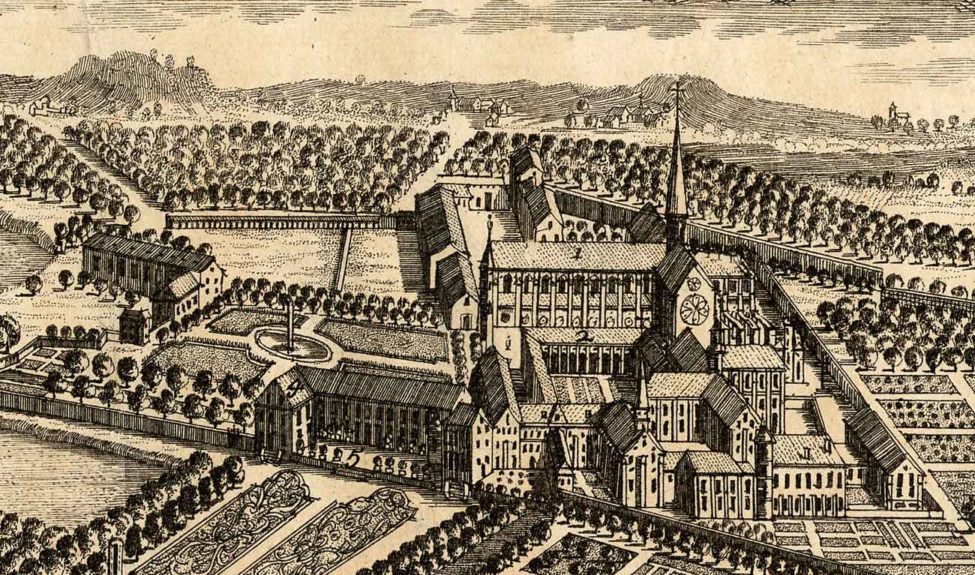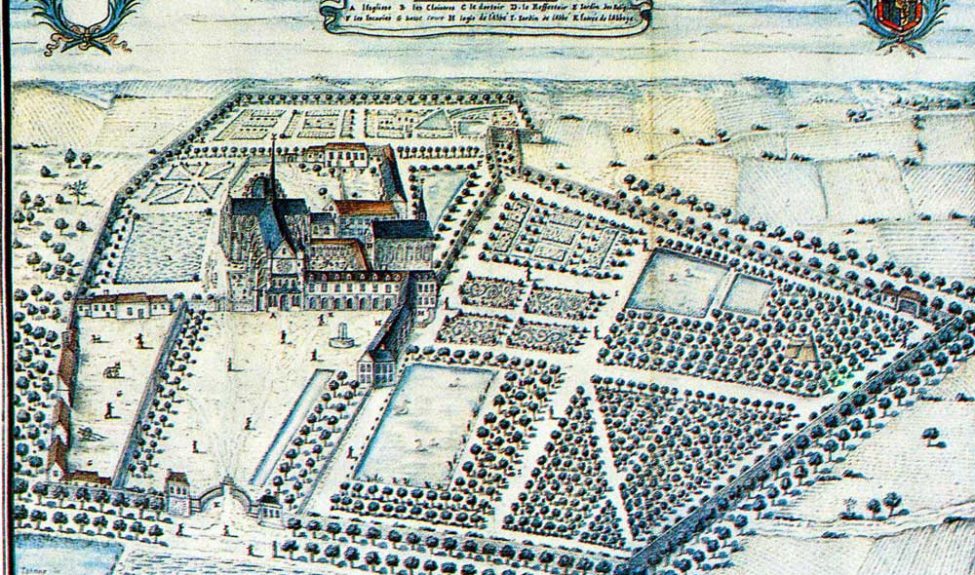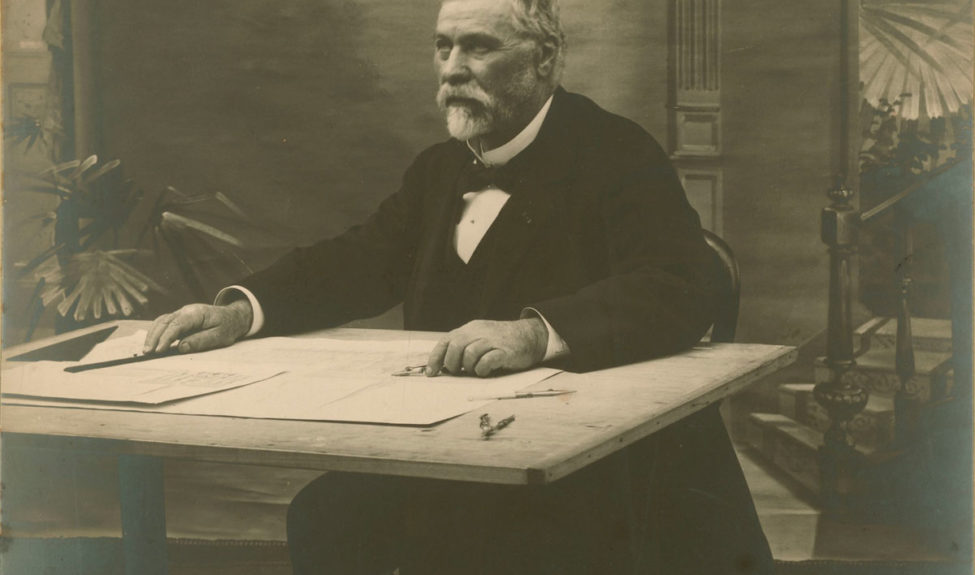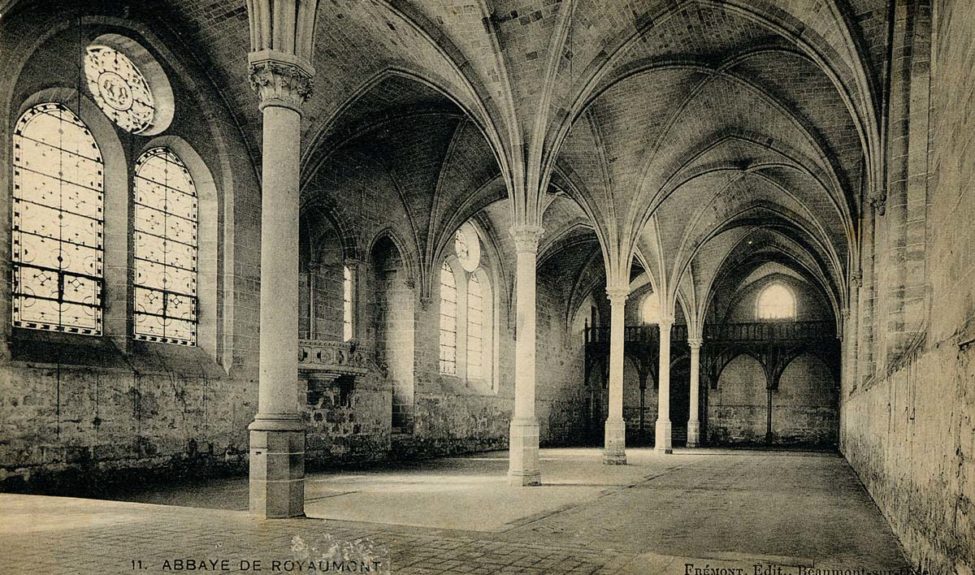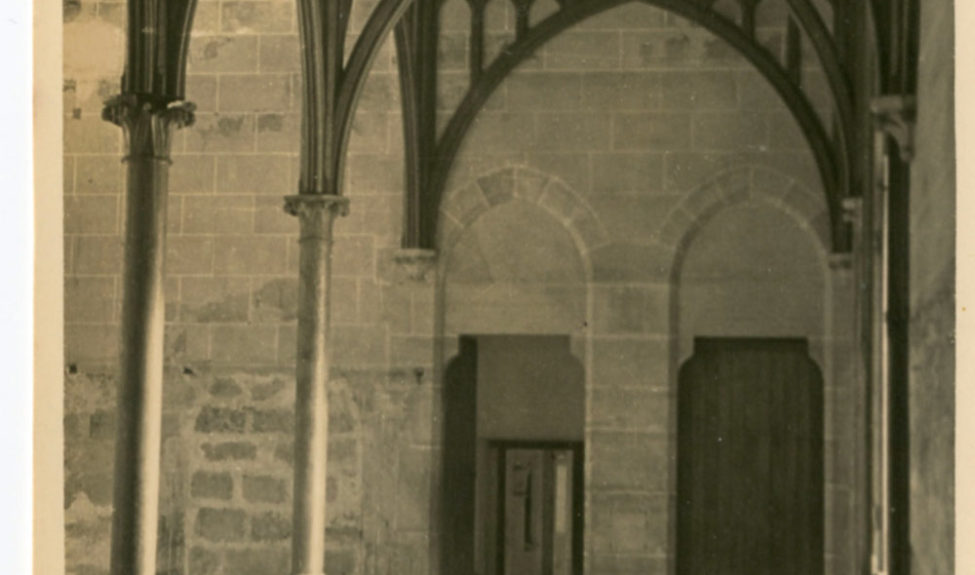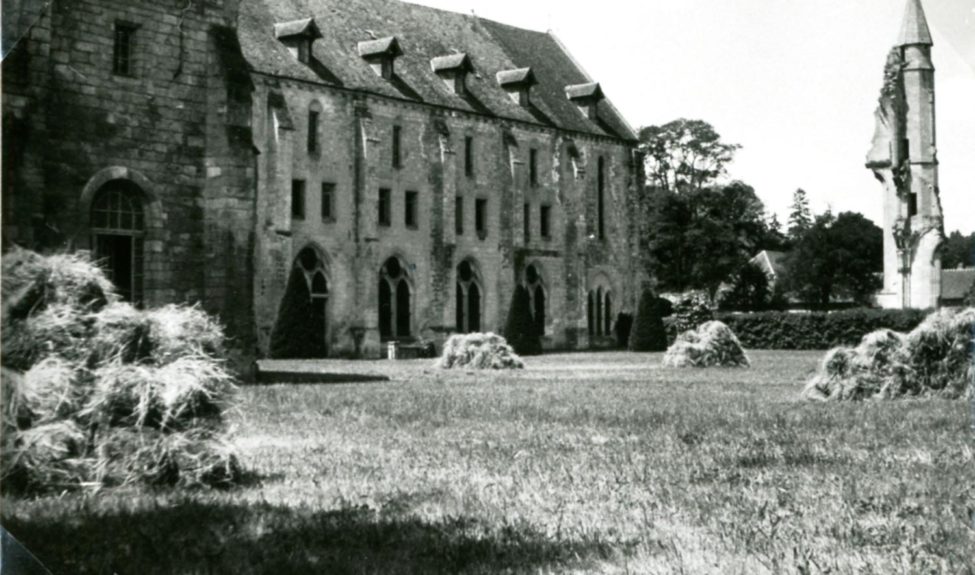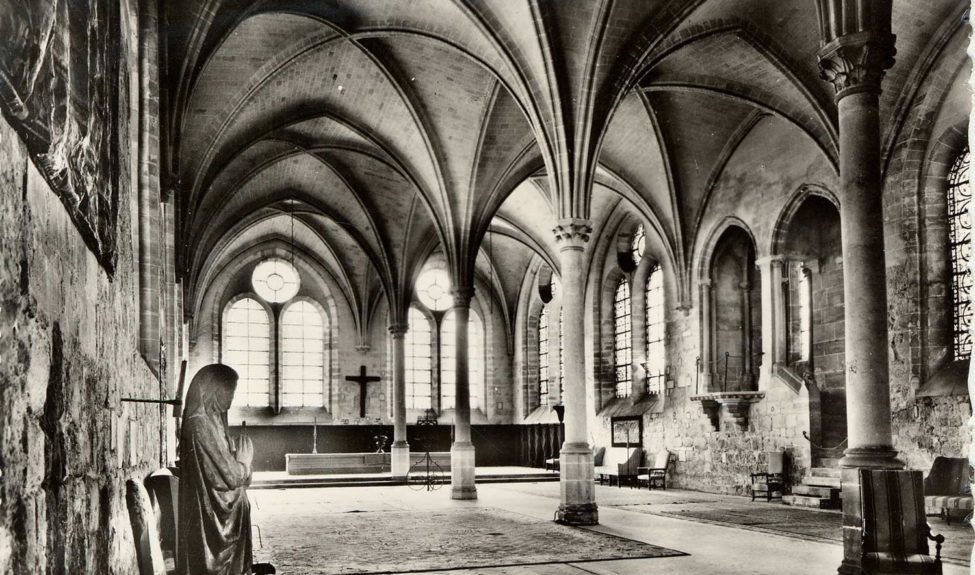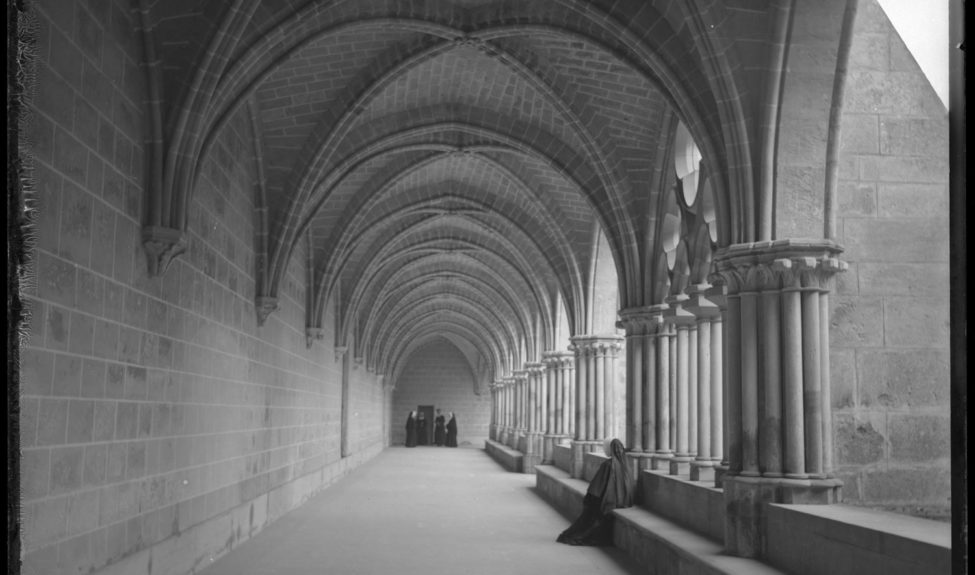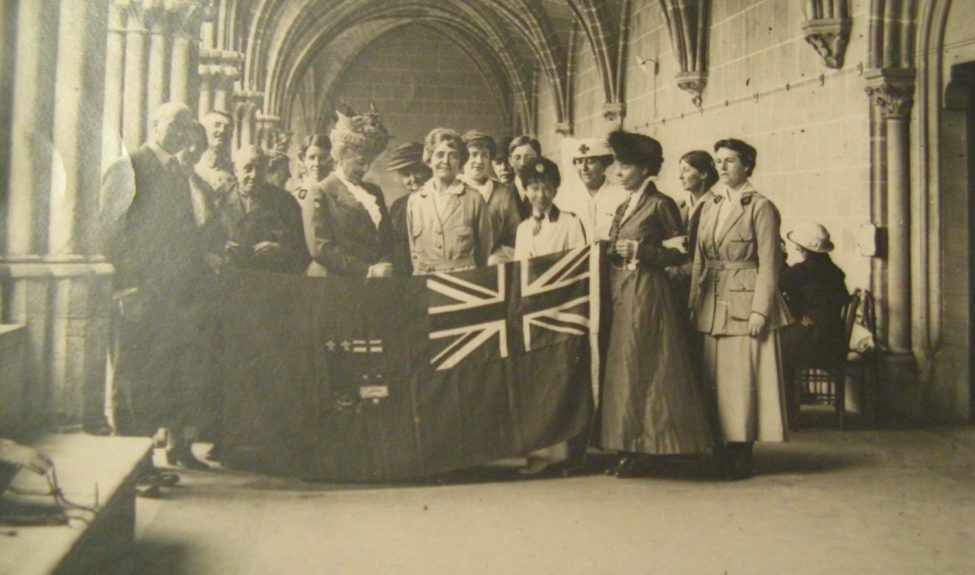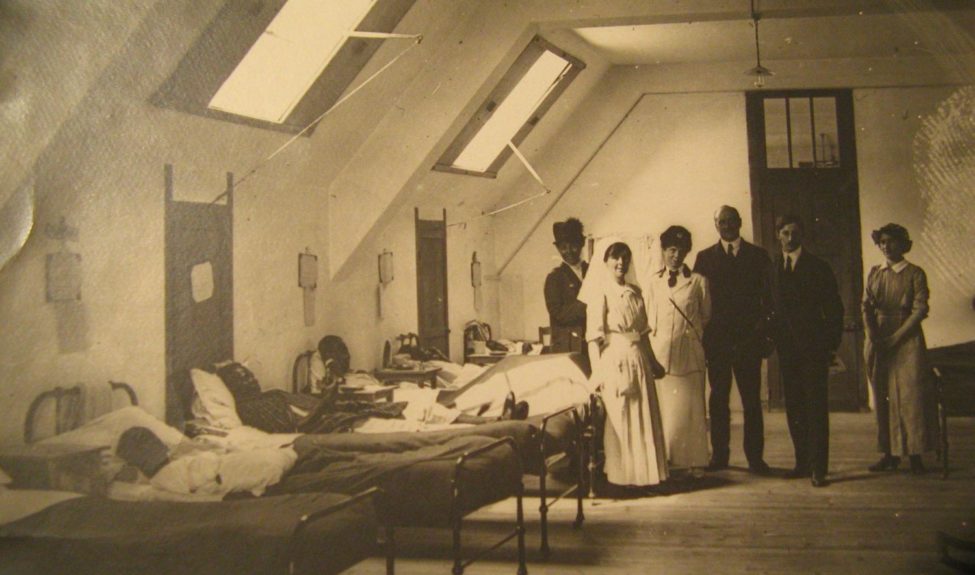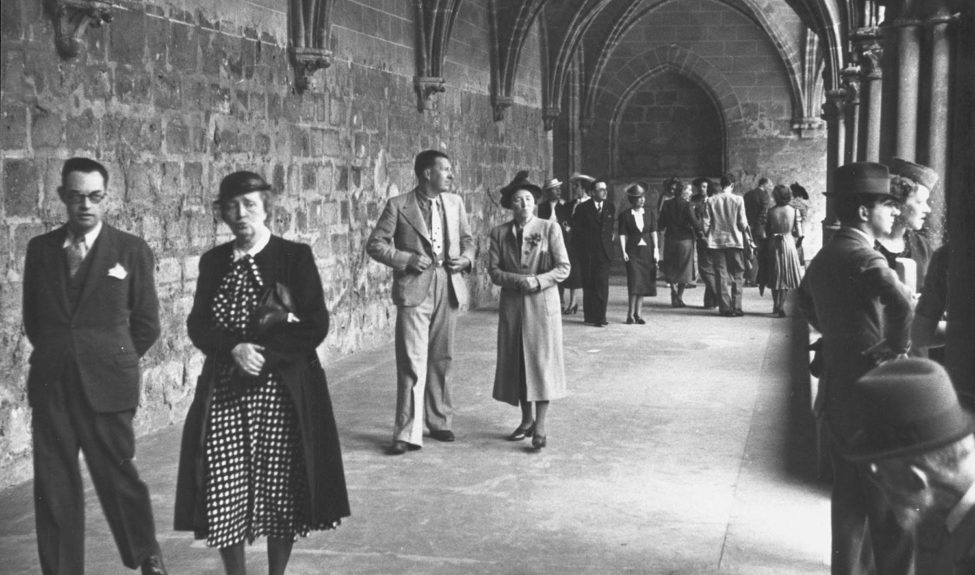“Royaumont, l’abbaye aux 1 001 vies”
[Le Figaro]

An exceptional site through the centuries
Founded in 1228 by the young Louis IX (future Saint Louis) and his mother Blanche de Castille, this Cistercian abbey enjoyed great influence in the Middle Ages.
Sold during the French Revolution, it was transformed into a textile factory, and the dismantled church was used to build a workers’ village.
In 1869, the abbey regained its original vocation when it became home to the novitiate of the nuns of the Sainte-Famille de Bordeaux, who restored it in the neo-Gothic style.
In 1905, Jules Goüin, president of the Société de Construction des Batignolles, acquired the former monastery.
His grandson, Henry Goüin, decided to open its doors to needy artists and intellectuals, to offer “the leisure to meditate – and possibly to create – to those whom life’s material difficulties too often force to live in places where beauty and poetry are absent “.
In 1964, the project was perpetuated in the form of a foundation, the Fondation Royaumont (Goüin-Lang) pour le progrès des Sciences de l’Homme.
Nestled in a soothing setting of timeless beauty, this monument, listed as a historic monument in 1927, has lived many lives, successively as a Cistercian monastery, a courtyard abbey, an industrial site, a novitiate, a war hospital and a country residence, before becoming a Centre Culturel de Rencontre. As a result, it was never abandoned.
A royal foundation, a Gothic masterpiece
Classified as a historic monument in 1927, Royaumont is the largest Cistercian abbey in the Ile-de-France region and an exceptional testimony to monastic life and Gothic architecture.
Its buildings are organized around a remarkably large cloister. Accessible from the passageway linking the cloister to the park, the chapter house now houses the Henry and Isabel Goüin Library.
The monks’ refectory is one of the few surviving examples of a two-aisle refectory in France. The airy structure of its architecture, with slender columns and large, stained-glass windows, recalls the liturgical function of meals for Cistercian monks, who were very attached to the symbolic function of their architecture. From the 19th century onwards, it was used as a workshop, drying room, chapel and finally concert hall, with the installation of a large Cavaillé-Coll organ in 1936.
The converse refectory is a three-bay room with ribbed vaults, one of the abbey’s most spacious; transformed into a ballroom, theater, canteen, dormitory and storehouse, it is now open to visitors, as are the monks’ former kitchens.
Crossed by a canal running its entire length, the latrine building – one of the last of its kind to be preserved in Europe – bears witness to the hydraulic science and concern for hygiene that existed among the Cistercians in the Middle Ages. Today, the first floor houses a residents’ lounge, a bar/tea room and a reception room. Upstairs, spaces have been created for concerts, artists’ rehearsals or corporate seminars.
They complement the residential facilities in the monks’ building, the abbey’s largest at 65 metres long and 23 metres high.
The Romanesque ruins of the abbey church, which was destroyed during the French Revolution, remain to the north of the abbey, consisting of columns and capitals. This edifice has been digitally reconstructed, enabling us to measure its exceptional size within the abbey.
The sacristy, with its pointed barrel vault, opens onto the south transept of the former abbey church and the cloister.
Stock photos
Royaumont Abbey, from yesterday to today
1228: In response to a wish from his father, Louis VIII, the young King Louis IX founded a new abbey, which he entrusted to a community of Cistercian monks. Construction was completed in 1235 with the dedication of the church. The size of the church and the importance of the property granted to the monks reveal the ambition of the young king, who made it one of the largest establishments north of Paris after Saint Denis.
1246: Vincent de Beauvais, a Dominican monk known for his Speculum majus, was the first intellectual to be welcomed to the abbey, where he held the position of lector.
From the beginning of the 14th century, the abbey began to suffer from a lack of means to maintain its temporal goods.
1549: the abbey was given in commendation, until the French Revolution, to personalities close to royal power, such as Mazarin, Richelieu and the Lorraine family (1651-1728), who restored it at great expense to give it a new lustre. Almost all the commendatory abbots tended to confuse private property with monastic property, abbey with holiday resort.
1635: Richelieu called a meeting of all Cistercian abbots to impose a return to strict adherence to the rules of the Order, and had them sign the ” Articles of Royaumont “. At the same time, King Louis XIII commissioned Royaumont to stage the Ballet de la Merlaison, of which he was the author and choreographer.
1783: the last commendatory abbot, Henri-Eléonore-François Le Cornut de Ballivières, a great socialite, organized sumptuous festivities and had the abbey palace built on the model of Italian villas, unfinished when he fled in 1789.
1790-1792: the abbey is declared a national asset. Books, archives, religious objects and furniture were transferred to warehouses or sold. The buildings were bought by the Marquis de Travanet, who had the abbey church demolished and the conventual buildings converted into a spinning mill.
1792-1860: Royaumont is one of the region’s most important industries. Owned and operated by the van der Mersch family from 1815 to 1860, it attracted artists and the Parisian bourgeoisie to the region.
1864-1905: the abbey was bought by the Oblate Fathers of Marie-Immaculée of Marseille, then entrusted in 1869 to the nuns of the Sainte Famille de Bordeaux, who set about restoring the buildings to their original use and form. Under the guidance of architect Louis Vernier, they undertook major restorations on the convent buildings, combining neo-Gothic spirit with respect for Cistercian simplicity.
1905: the Combes law on congregations forces the nuns of the Sainte Famille de Bordeaux to leave the abbey. It was bought by a leading industrialist, Jules Goüin, president of the Société de Construction des Batignolles, founded by his father Ernest Goüin in 1846. The abbey became the Goüin family’s second home.
1915-1919: the abbey is home to auxiliary hospital no. 301, run by a team of Scottish women doctors and nurses, “the Scottish Women”.
1927: the abbey is listed as a historic monument.
1931: Henry Goüin, grandson of Jules Goüin, marries Isabel Lang. Together, they embarked on a program of restoration and refurbishment of the buildings – the convers building, roofing of the cloister, repair of the latrine building’s roof structures, installation of a Cavaillé-Coll organ in the former refectory and removal of the gallery, first restoration of the old kitchens, re-roofing of the guesthouse and monks’ building, installation of central heating – and turned the abbey into a meeting place for artists and intellectuals.
1936: on June 27, a first public concert was given in the former refectory, heralding the future musical seasons.
1938: the Foyer de l’Abbaye de Royaumont, a place for artists and intellectuals to work or rest, is created. Its activities were interrupted during the war. It resumed in 1947 under the direction of Gilbert Gadoffre and became the Centre culturel international de Royaumont (CCIR).
1949: the Paul Desjardins library (from Pontigny Abbey) is acquired by Henry Goüin.
1953: The CCIR became the Cercle culturel de Royaumont, which was dissolved in 1968.
1953-1964: restoration of the old kitchens, latrine building, turret, cloister, former refectory and monks’ building…
1964: Henry and Isabel Goüin create the Fondation Royaumont (Goüin-Lang), for the advancement of human sciences, declared a public utility by decree of the Conseil d’Etat on January 18, 1964, and endow it with their Royaumont property and capital.
1971: the Centre de Royaumont pour une Science de l’Homme is created. He left the Foundation in 1973.
1972: Royaumont is a founding member of the Association des Centres Culturels de Rencontre.
1977: Henry Goüin dies on February 24. On April 5, the Foundation signed an agreement with the Val-d’Oise département, and from 1978 onwards developed a new cultural project.
1976-1980: further restoration work on the cloister, former refectory and monks’ building, and refurbishment of the guest house…
1984: creation of the Centre de la Voix, a center for research and interpretation of medieval music, a literary center, a visual arts center and an ethnological research program.
1988: Isabel Goüin dies on October 28.
From 1983 to 1992: restoration of the remains of the abbey church, the converse building, the cloister, the former kitchens, renovation of the 40 rooms and the north and west galleries of the cloister, renovation of the latrine building and construction of a new porter’s house…
From 1992 to 2010: restoration of the former monks’ refectory, tiling of the old kitchens, restoration of the cloister balustrades and terraces, restoration and opening to the public of the François-Lang Music Library, creation of 6 new rooms, restoration of the cloister garden, restoration of the attic of the convers building and creation of a new rehearsal room.
2000: the cultural project is redefined. It diversified musical programs, opened up to contemporary dance, associated poetry with encounters with other disciplines, and linked heritage and creation more closely.
2004: creation of a medieval-inspired garden, le jardin des 9 carrés, designed by Olivier Damée and Edith Vallet.
2007: acquisition of the François-Lang Music Library.
2010: the cultural project is refocused on music and heritage in two main areas: the “Artistic Programs” cluster, which brings together the Voice Program, the Keyboards Program, the New Voices Program, the Oral and Improvised Music Program, the Choreographic Research and Composition Program, the Scenic Unit, the Grand Atelier, the François-Lang Library, the Archives and the Henry & Isabel Goüin Library, and the “Territorial Action and Audiences” cluster, responsible for disseminating the activities implemented by the various artistic programs.
2014: opening on June 28 of the Potager-Jardin, designed by Astrid Verspieren and Philippe Simonnet, restoration and refurbishment of the former lay brothers’ refectory and signing on October 3 of a five-year contract of objectives (2014-2018) with the State, the Ile-de-France region and the Val-d’Oise département.
2015-2016: the Royaumont Foundation undertakes major restoration work on its abbey, and renovates and extends its residential facilities.
2016: Mahler Music Library (Paris) joins the Royaumont Foundation
2020: restoration of the facades and roofs of the monks’ refectory and former boiler room; restoration of exterior joinery; insulation of attic space; upgrading of electrical installations.
2022: restoration of the old medieval gate, found in an abbey canal at the end of the 19th century and listed as a “Monument Historique” in 1934. A carbon-14 dating test carried out at the time confirmed that it was made from oak felled between 1220 and 1271.
